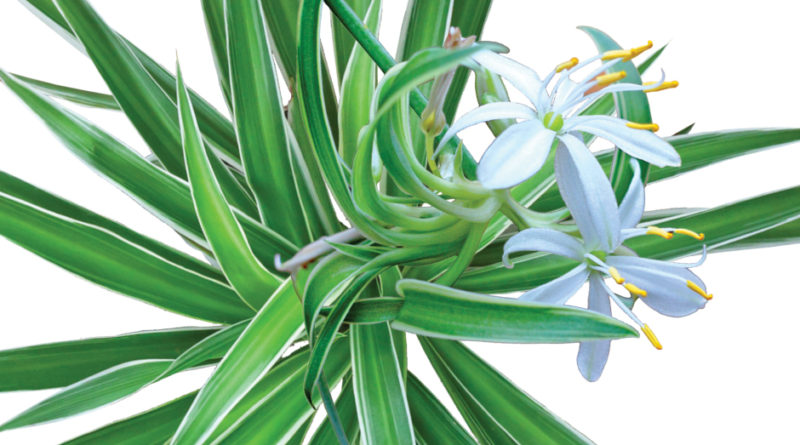Towering Spiders: Hydroponic Spider Plants
 Fig. 1.
Fig. 1.
When one thinks about what kind of plant to grow in a hydroponic tower, Chlorophytum comosum (Thunb.) Jacques, the spider plant, may not be the first species that comes to mind. Maybe it should be. Since my school began operating three garden towers seven years ago, we have grown lettuce, vit mâche (kind of like lettuce), morning glories, Coleus, and, most recently, spider plants. We’ve had good success with all those species, but nothing has been as reliable, productive, and forgiving as the spider plants (Fig. 1).
We have had all three towers stocked with spider plants at various times, but the tower shown in Fig. 1 has been operating with little maintenance for more than a year under moderate light conditions in a basement near a window.
Usually, students are responsible for everything to do with the horticulture program at the school which consists of three garden towers and a lab where seedlings and cuttings are propagated and studied. The lab technicians are trained to start plants in stonewool, load the net baskets with plants, mix nutrient solutions, monitor and adjust the reservoir level, pH, and electrical conductivity, and to perform basic repair and maintenance that has kept the towers running for the past seven years.
Read also:
The only problems we have had with the units are occasional kinked hoses and failed pumps which we replaced with upgraded ones. Students don’t generally do the thorough cleaning required between runs. Guess who gets to do that?
I say usually the students are responsible for everything, but the 2020-21 school year was anything but usual. Due to the pandemic and precautions taken, only one tower was operational this year and it ran unattended for extended periods. The reservoir ran dry on at least one occasion, but the upgraded pump survived no problem. Other times the plants were reported to be severely wilted, though the addition of water brought them right back.
To top off this impressive resilience, no fertilizer was added to the reservoir for more than eight months and the plants survived, thrived even, on just water and whatever nutrients were introduced by decay of roots and microbial action.
 Fig. 2.
Fig. 2.
 Fig. 3.
Fig. 3.
In an example of how we use spider plants in STEM (science, technology, engineering, and mathematics) education, a couple of students performed a series of experiments testing how the number of root initials on a spider plant cutting affected the later successful growth and development of the plant. Fig. 2 shows a graph of one result of this work. It shows that, on average, you can expect about one more root to develop than is visible as a primordia on a cutting. Note that the most primordia typically visible on a plantlet (also known as a spiderling) was nine because we collected plantlets as often as we could from about 20 stock plants in hanging baskets. However, after the recent extended growth period without harvesting, many of the tower-grown plantlets had more than 20 well-developed root initials (Fig. 3).
Other experiments have shown that the more root initials there are on a cutting,  Fig. 4.
Fig. 4.
the better the chance of survival after transplant. Each net basket started out with one plantlet rooted in stonewool, but now the baskets have three or four plants producing many plantlets each.
When the tower was recently brought home for the summer, 241 plantlets with well-developed aerial root initials were harvested and transplanted into soil (Fig. 4 and 5). We hope to sell them at a fundraiser next school year to support more hydroponics research.
There is much to recommend the spider plant as a candidate for hydroponic/aeroponic propagation: they handle neglect well, reproduce quickly, really fill out a tower, and people like them. One disadvantage is the mother plants are so tightly jammed into the tower openings that they are impossible to remove without disassembling the tower one level at a time. Oh well, I guess we’ll have to leave them there and let them make more spiderlings.
 Fig. 5.
Fig. 5.




